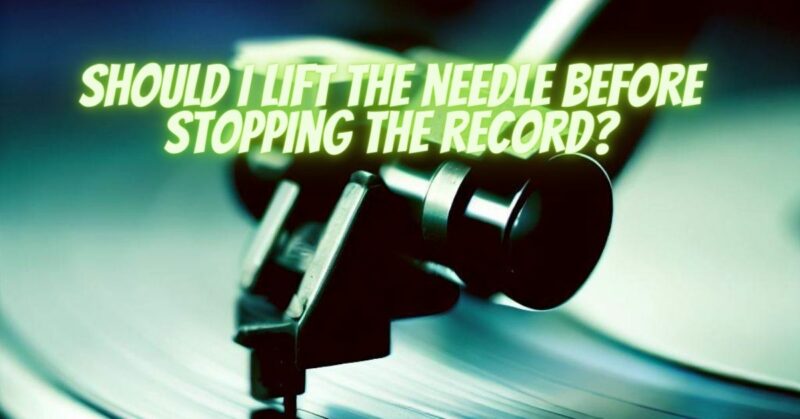Playing vinyl records is not just about enjoying the music; it’s also about preserving the delicate grooves of your beloved LPs and ensuring their longevity. A common question that arises among vinyl enthusiasts is whether it’s necessary to raise the tonearm before stopping the record. In this article, we’ll delve into the intricacies of this practice, examining the reasons behind it and whether it should be a part of your vinyl playback routine.
Understanding the Tonearm and Stylus
Before addressing the question at hand, it’s crucial to understand the role of the tonearm and stylus (needle) in the vinyl playback process:
- Tonearm: The tonearm is the component responsible for holding the cartridge and stylus in place. It is designed to pivot horizontally and vertically, allowing the stylus to trace the grooves of the record.
- Stylus (Needle): The stylus is the small, needle-like part at the end of the tonearm that physically makes contact with the record’s grooves. It’s responsible for translating the grooves’ vibrations into electrical signals, which are then amplified and converted into sound.
The Purpose of Raising the Tonearm
The practice of raising the tonearm before stopping the record is rooted in the desire to protect both the stylus and the record itself. Here’s why some vinyl enthusiasts advocate for this approach:
- Stylus Preservation: By lifting the tonearm before stopping the record, you minimize the risk of accidentally dragging or scratching the stylus across the record’s surface. This helps extend the lifespan of the stylus and maintain its performance.
- Record Protection: Raising the tonearm prevents the stylus from resting on the record’s surface when it’s not in use. This reduces the chances of dust, debris, or mishandling damaging the grooves.
- Preventing Groove Wear: Constant contact between the stylus and the record can, over time, cause wear and tear on the record’s grooves. By lifting the tonearm, you reduce the potential for groove damage.
The Counterargument
While raising the tonearm before stopping the record is a widely recommended practice, some argue that it may not be necessary in all cases. Here’s the counterargument:
- Record Wear During Playback: Some vinyl enthusiasts contend that the stylus, in its normal course of tracking the grooves during playback, creates wear regardless of whether the tonearm is lifted before stopping. Therefore, they argue that lifting the tonearm may have limited impact on groove preservation.
- Motor Stopping: In some turntables, stopping the motor promptly when the music ends can prevent unnecessary wear on the grooves. In such cases, lifting the tonearm may not be as critical.
- Manual Handling: Properly maintaining and handling records, keeping them clean and dust-free, and using a high-quality stylus can mitigate the need to raise the tonearm excessively.
The practice of raising the tonearm before stopping the record is a precautionary measure aimed at preserving both the stylus and the record. While it can help extend the life of these valuable components, its necessity may vary depending on your turntable’s design, the condition of your records, and your handling habits.
Ultimately, it’s advisable to adopt good record care practices, including regular cleaning and stylus maintenance, as well as gentle handling. If you’re concerned about preserving your records and stylus, raising the tonearm before stopping the record is a sensible practice to incorporate into your vinyl playback routine. However, it’s just one part of the broader effort to enjoy vinyl records while ensuring their long-term durability and sound quality.


